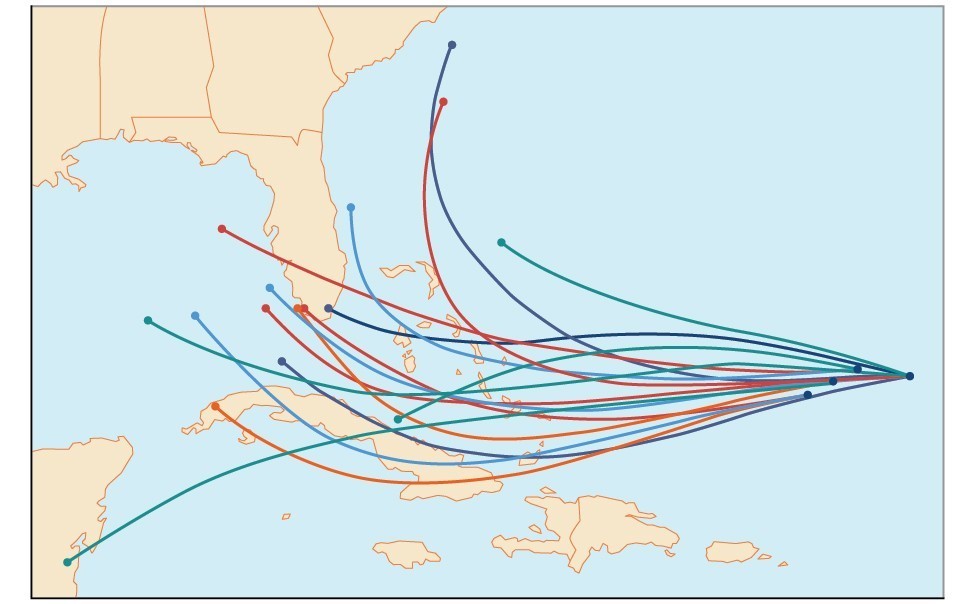Introduction to Probability
Learning Outcomes
By the end of this section, you will be able to:- Construct probability models.
- Compute probabilities of equally likely outcomes.
- Compute probabilities of the union of two events.
- Use the complement rule to find probabilities.
- Compute probability using counting theory.
 An example of a "spaghetti model," which can be used to predict possible paths of a tropical storm.
An example of a "spaghetti model," which can be used to predict possible paths of a tropical storm.Licenses & Attributions
CC licensed content, Original
- Revision and Adaptation. Provided by: Lumen Learning License: CC BY: Attribution.
CC licensed content, Shared previously
- College Algebra. Provided by: OpenStax Authored by: Abramson, Jay et al.. License: CC BY: Attribution. License terms: Download for free at http://cnx.org/contents/[email protected].
CC licensed content, Specific attribution
- Precalculus. Provided by: OpenStax Authored by: OpenStax College. Located at: https://cnx.org/contents/[email protected]:1/Preface. License: CC BY: Attribution.
